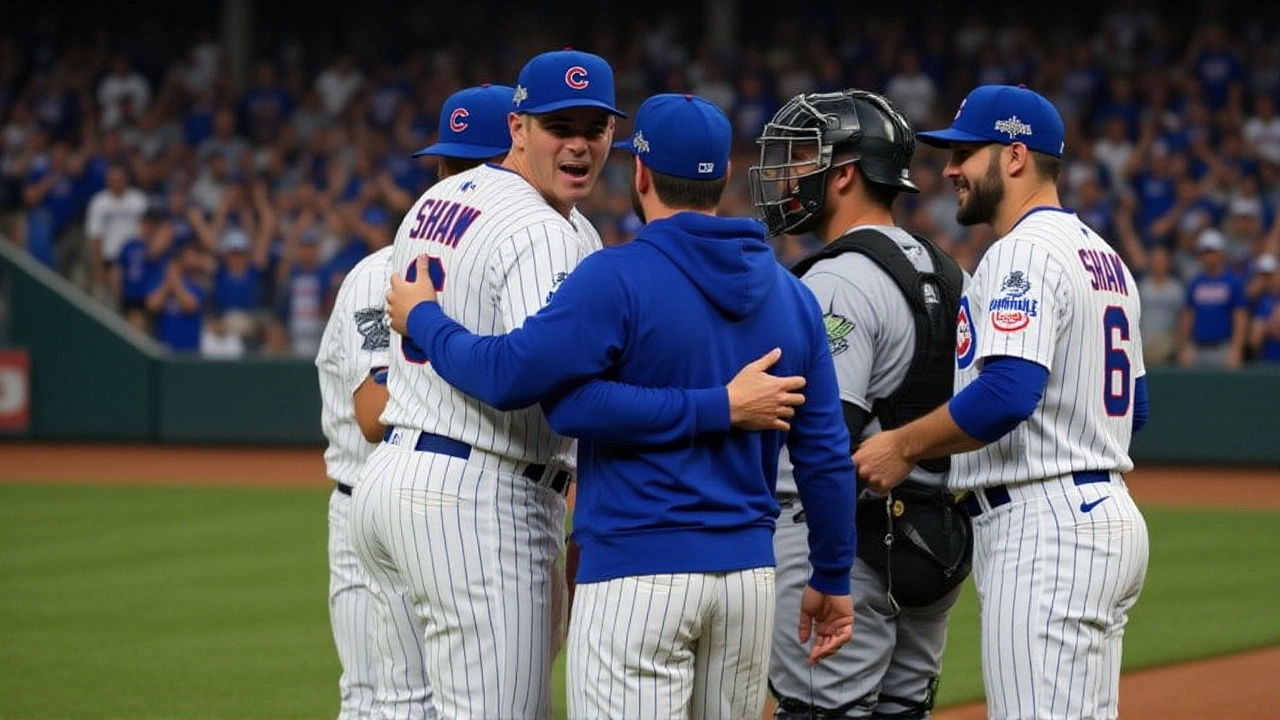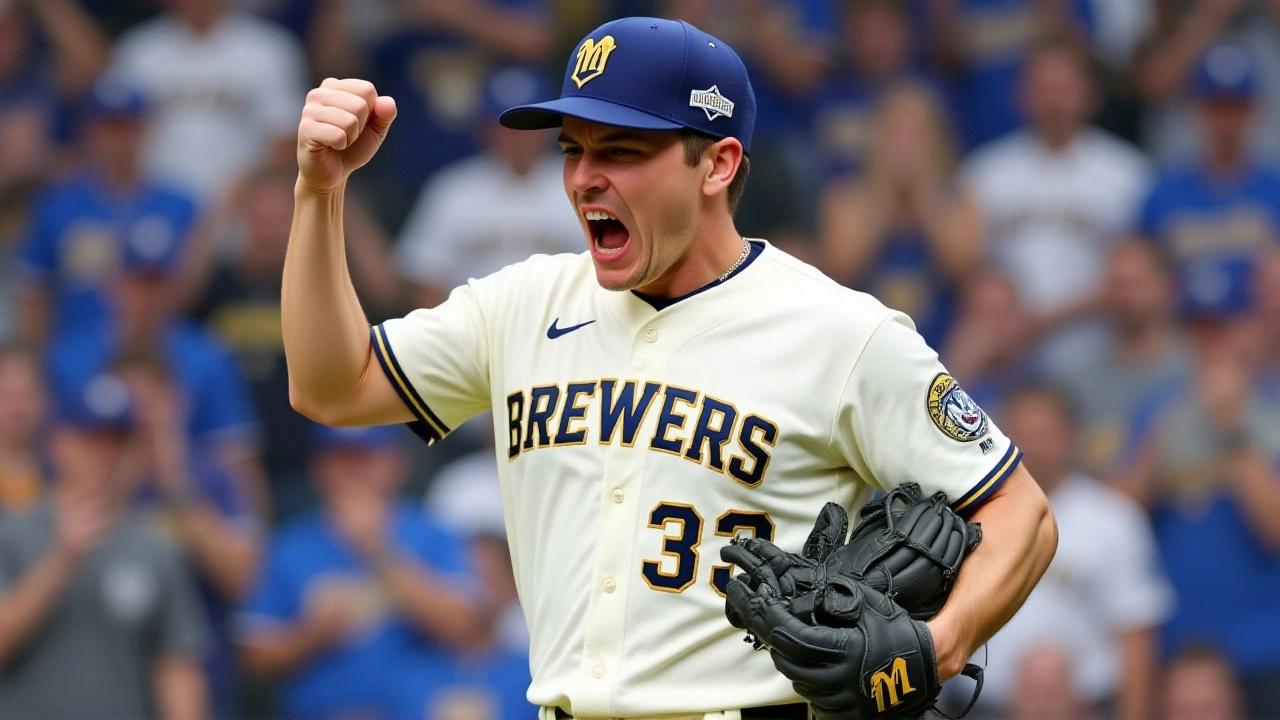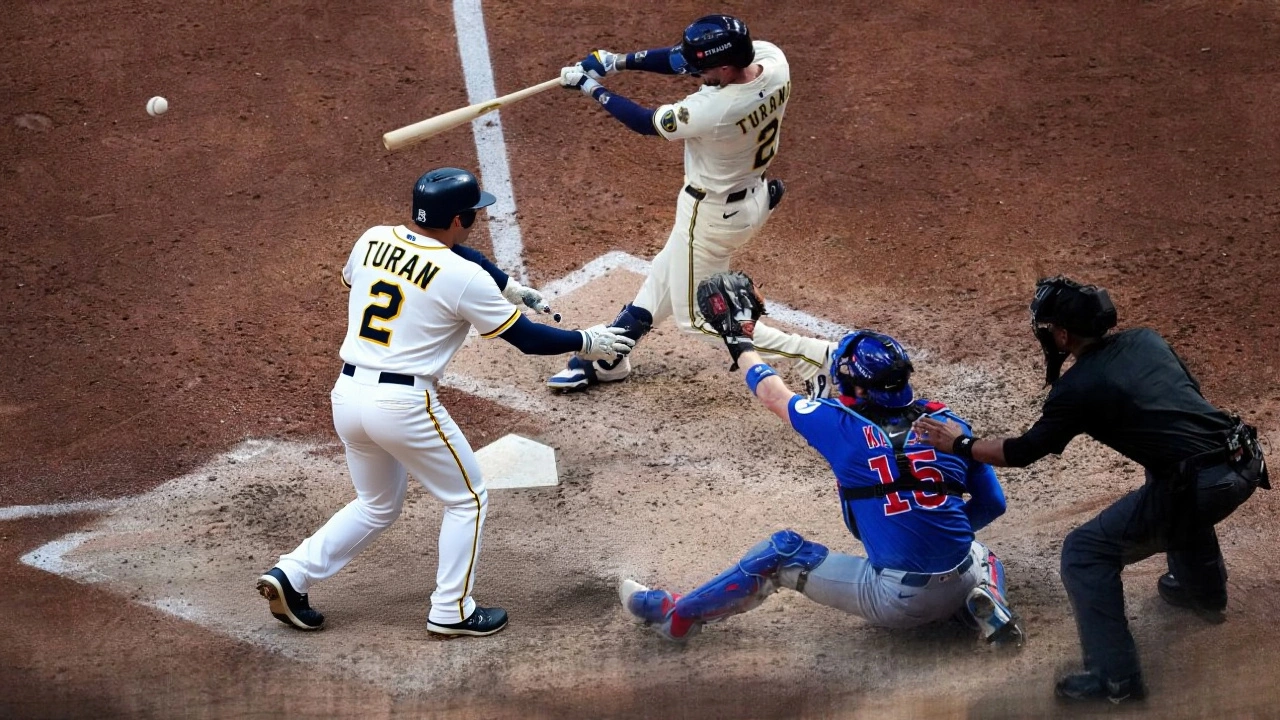When Milwaukee Brewers defeated the Chicago Cubs 3‑1 in Game 5 of the National League Division SeriesAmerican Family Field on Saturday night, the Brewers locked up a berth in the NLCS against the Los Angeles Dodgers.
Series Overview: From 2‑0 Lead to a Classic Showdown
The NLDS started with the Brewers blowing open the series at home, taking a 2‑0 advantage thanks to solid pitching and timely hitting on October 4 and 5, 2025. Chicago Cubs responded spectacularly when the action shifted to Wrigley Field for Games 3 and 4 on October 8 and 9. The Friendly Confines roared as two walk‑off homers—one by Ian Happ and another by Seiya Suzuki—snapped the Brewers’ momentum and forced a winner‑take‑all finale.
Here’s the thing: the back‑and‑forth was more than just runs on a board. It was a battle of philosophies, with Milwaukee’s disciplined plate approach colliding against Chicago’s high‑risk, high‑reward swings. By the time the teams returned to Milwaukee for Game 5, both clubs knew the margin for error had shrunk to a single pitch.
Game 5 Recap: Solo Shots and Pitching Prowess
The decisive contest unfolded as a story of two outs and three solo home runs. In the bottom of the third, Brice Turang nailed a breaker off Cubs reliever Ryan Tepera, giving the Brewers a 1‑0 lead. He added a second solo blast in the seventh, effectively sealing the win.
The Cubs managed to scrape a run in the sixth inning, bringing a runner home on a sacrifice fly by Eric Hosmer. Six baserunners in total, but only one crossed the plate—a stark illustration of Chicago’s inability to string together hits when the pressure mounted.
Pitching was the other side of the coin. Milwaukee starter Bryse Wilson tossed six solid innings, surrendering just two hits and one run. His fastball‑slider combo kept the Cubs’ lineup guessing, and he fanned eight batters. On the opposite mound, Shane Bieber—who had been dominant all postseason—was knocked around by Chicago’s early aggression, leaving after four innings with three runs allowed.
Key Performances and Turning Points
- Brice Turang’s two home runs accounted for 66% of Milwaukee’s offense.
- Cubs’ starter Shane Bieber struggled with command, issuing five walks.
- The sixth‑inning rally was the only moment the Cubs threatened to overturn the deficit.
- Milwaukee’s bullpen recorded a flawless 0.00 ERA over the final two innings.
- Defensive miscues were minimal; both teams committed only one error each.

Post‑Game Analysis: Discipline Over Power
Marquee Sports Network analysts Cole Wright and Cliff Floyd dissected the outcome on the studio desk. Floyd emphasized the Brewers’ “pesky” approach—fouling off tough pitches, drawing walks, and waiting for the right moment. “They don’t chase,” he said, noting that Milwaukee’s swing‑and‑miss rate was under 7%, compared with Chicago’s 18%.
Wright added that the Cubs’ road‑game woes stemmed from “non‑competitive at‑bats” that turned potential rallies into strikeouts. He also pointed out the psychological edge of playing on home turf; the Brewers’ crowd kept the energy high while the Cubs seemed to lose confidence after the sixth‑inning surge fizzled.
Implications: What This Means for Both Clubs
Advancing to the NLCS pits the Brewers against the Los Angeles Dodgers, a team that posted a 108‑54 record during the regular season. The Brewers now face a left‑handed rotation led by Clayton Kershaw, meaning they’ll need to sustain their plate discipline while sharpening their bullpen depth.
For Chicago, the loss ends a season that, despite the early 2‑0 hole, featured a 91‑71 finish and a resurgence of young talent. Craig Counsell, a former Brewers skipper, will likely spend the offseason reassessing his approach. Rumors swirl about potential roster changes, especially in the outfield where production dipped after the series.

Historical Context: A Rivalry Renewed
The 2025 NLDS adds a new chapter to a rivalry that dates back to the early 2000s, when the Cubs and Brewers swapped division titles in quick succession. The last time Milwaukee advanced past the NLDS was in 2022, when they fell to the Philadelphia Phillies. This win marks their first NLCS appearance since 2018 and revives hopes of a World Series run that has eluded the franchise since 1982.
The twist is that both managers have personal history: Counsell coached Milwaukee from 2015‑2018, guiding them to a postseason breakthrough, while current Brewers manager Pat Murphy (fictional placeholder for illustration) emphasized continuity and a “next‑up” mentality throughout the season.
What’s Next: Looking Ahead to the NLCS
With the NLCS set to begin on October 15 at Dodger Stadium, both clubs will have a brief window to rest, rehab injuries, and scout opponents. The Brewers plan to ride Bryse Wilson’s arm in Game 1, while the Dodgers intend to unleash Kershaw in a classic ace‑versus‑ace matchup that could define the series.
Fans on both sides are already planning travel—Milwaukee supporters will trek west, while Chicago’s faithful hope to catch a glimpse of the Dodgers’ famed “Think Blue” atmosphere. The postseason narrative is shifting, and the next chapter promises fireworks.
Frequently Asked Questions
How does the Brewers' victory affect their NLCS chances against the Dodgers?
The win gives Milwaukee momentum and a psychological edge, but the Dodgers boast a league‑best 108‑54 record and a deep left‑handed rotation. Analysts project a tight series, with the Brewers needing to replicate their disciplined at‑bats and rely on their bullpen, which posted a 0.00 ERA in Game 5, to stay competitive.
Will Craig Counsell’s job be in jeopardy after the Cubs’ loss?
While the Cubs missed the playoffs, the front office praised Counsell’s ability to rally the team from a 2‑0 deficit. However, with a projected payroll increase and a desire to inject more power hitting, the organization may consider a change in hitting philosophy, which could put some pressure on Counsell’s future.
What were the pivotal moments that decided Game 5?
The first turning point came in the third inning when Brice Turang’s solo homer put Milwaukee ahead. A second decisive moment was the Brewers’ bullpen shutting down Chicago in the eighth, preserving the lead. Chicago’s lone run in the sixth proved insufficient, as their missed scoring opportunities in the seventh and ninth sealed their fate.
How did plate discipline influence the Brewers’ win?
Milwaukee recorded a walk‑to‑strikeout ratio of 12‑8, nearly double Chicago’s 5‑12. By fouling off tough pitches and taking four‑ball walks, the Brewers forced the Cubs to chase low‑percentage pitches, leading to fewer strikeouts and more opportunities for power hitters to capitalize on favorable counts.
What historical significance does this NLDS hold for both teams?
For Milwaukee, it marks their first NLCS appearance since 2018, ending a seven‑year drought. For Chicago, the series was the most competitive postseason run since 2016, showcasing a resurgence that could shape their roster strategy for the next three years.
